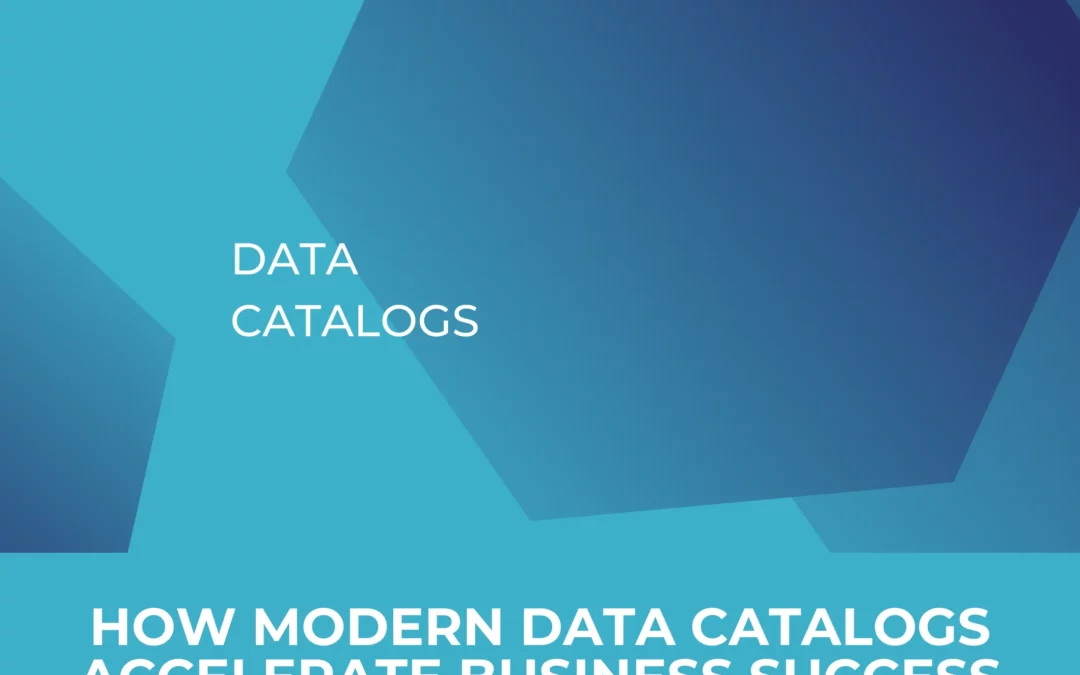Reporting is not a dashboard, and KPIs are not metrics
Reporting KPIs are the most important metrics that companies use to measure their goal achievement—regularly, in a structured and targeted manner. They are not a by-product of tools, but the result of conscious choices: What should who know—and what can they deduce from this?
But in practice, we often see the opposite: Excel lists with 40+ metrics, automated dashboards without context, or reports that are structured differently from month to month.
Our goal with this article is to show you which KPIs belong in reporting, how to select them, and how they differ from pure metrics. Designed for CMOs, growth leads, in-house BI and anyone who sees reporting not as a chore but as a strategic management tool.
Table of Contents
If you would like an overview of the most important marketing metrics and how to track them, we recommend this article: The 10 most important marketing KPIs – and how to track them correctly
What is a reporting KPI – and what isn’t?
A KPI (key performance indicator) is not just any number from a tool export – it is a targeted metric that represents a measurable performance in relation to a defined goal. And yet, in many companies, the boundaries between metrics and KPIs are blurred – often with fatal consequences for reporting.
Because: Not every metric is automatically a useful reporting KPI.
Metric ≠ KPI: What is the difference?
A metric describes a single event or behavior. A KPI places this behavior in a strategic context: Is it good? How does it change over time? What action should be taken as a result?
Examples of metrics – without a reporting context:
-
Reach of a single social media post
-
CTR of a specific ad
-
Sessions per page in a given week
These values can be valuable for operational purposes – for example, in Ad Manager or a performance dashboard. But without comparison, targets, or context, they tell you nothing in reporting about whether a goal has been achieved – or what should happen next.
| Metrics | Reporting KPIs with context |
|---|---|
|
Sessions per page |
Average pages per session by target group vs. previous month |
|
CTR of individual ads |
Average CTR per campaign goal (e.g., lead generation) + benchmarks |
|
Social reach |
Engagement rate per content type over time |
| Time on Page |
Dwell time in funnel comparison (top, middle, bottom of funnel) |
Conclusion: A single metric becomes a reporting KPI if it is targeted, aggregated, comparable, and relevant to action.
Why is this important?
In good reporting, not all available metrics end up in the report—only those key figures that are relevant to decision-making for the respective target group. This means:
Fewer numbers. More clarity. More impact.
How do you select the right reporting KPIs?
The most important question when selecting KPIs is not: “What can we measure?” but rather: “What do we need to know in order to make better decisions?”
Good reporting is not the result of tool functions or ready-made templates, but rather a conscious selection of relevant KPIs tailored to the objective, target group, and decision-making requirements.
The 5 most important selection criteria for reporting KPIs
1. Goal orientation
A KPI must be directly linked to a specific goal – e.g., new customer acquisition, funnel efficiency, cost control, or retention.
Example: “Conversion rate” is only relevant if conversions are a strategic goal.
2. Target group relevance
Not everyone needs the same figures. CMOs are interested in budget efficiency, BI in data quality, performance teams in campaign metrics. Reporting KPIs must fit the perspective of the recipients.
3. Comparability
A KPI must be comparable across time, channels, and target groups. This requires:
-
Clear definition (What exactly is a “lead”?)
-
Consistent calculation
-
Valid data sources
4. Controllability
Good reporting KPIs refer to variables that can be actively influenced – whether through budget, campaign structure, target group alignment, or content.
If a KPI changes but no one knows why or what can be done about it, it is unsuitable for reporting.
5. Automability & data quality
A KPI must be measurable on a regular basis, valid, and automated. If it can only be generated manually by merging five sources in Excel, reporting is not scalable.
Common misconception: “We just take all the metrics from GA4, HubSpot, Meta Ads, and reporting is done.” No. Good reporting filters. It prioritizes. It reduces complexity, separates operational details from the strategic core, and focuses on decision-relevant metrics.
Reporting KPIs by target group: Who needs what?
A common mistake in reporting: sending all figures to everyone in the hope that someone will find them useful. The result: KPI overload, lack of transparency, and disinterest on the part of decision-makers.
Effective reporting means providing the right KPIs for the right target group.
After all, every function, from C-level to marketing to BI, pursues its own goals, makes different decisions, and requires different metrics.
For management (CMO, CEO, CFO)
Focus: Strategy, impact, budget efficiency
This target group needs a few meaningful KPIs to assess the overall status of marketing. It’s not about details, but about impact, development, and investment quality.
Typical KPIs:
-
Customer acquisition cost (CAC)
-
Customer lifetime value (CLV)
-
Return on marketing investment (ROMI)
-
Pipeline contribution through marketing (e.g., % MQLs from inbound)
-
Lead-to-customer conversion rate
-
MQL-to-SQL ratio
-
Budget efficiency by channel
Where possible, figures should be accompanied by comments, interpretation, and recommendations for action.
For marketing, performance, and growth teams
Focus: tactics, optimization, channel management
These are KPIs that enable daily or weekly adjustments but must be grouped sensibly in reports. No flood of individual data, but performance signals with potential for control.
Typical KPIs:
-
Cost per lead (CPL)
-
ROAS by channel/campaign
-
Conversion rate by funnel stage
-
Engagement rate on content pieces
-
Landing page performance (e.g., bounce rate vs. target audience)
-
Scroll depth/dwell time (e.g., for content hubs)
-
Retention or return rate
Additional information: These 10 KPIs should not be ignored in marketing
For BI teams and stakeholders responsible for data
Focus: Data quality, coverage, scalability
BI teams don’t need classic performance KPIs, but rather reporting metrics that indicate whether reporting is reliable at all. The focus here is on the technical and structural basis.
Typical KPIs:
-
% of reportable channels (tracking & consent coverage)
-
Consistency of KPI definitions (e.g., “lead” in GA4 vs. CRM)
-
Data availability by source (e.g., Facebook vs. LinkedIn vs. CRM)
-
Proportion of automatically generated vs. manually maintained KPIs
BI KPIs rarely flow directly into top-level reporting, but they are crucial for its reliability.
Reporting KPIs along the funnel: structure through goal setting
Not all KPIs fulfill the same function – some measure reach, others conversion, and still others customer loyalty.
Reporting gains enormous clarity when it is aligned with the customer journey: from initial contact to revenue realization and beyond.
That’s why we structure reporting KPIs along the typical funnel phases: awareness, consideration, conversion, retention, and revenue.
Awareness (attention & reach)
Goal: brand awareness, visibility, initial interaction
Typical reporting KPIs:
-
Reach / impressions by channel
-
Share of voice (organic vs. paid)
-
Brand search volume (development)
-
Video view rate / completion rate
-
Social engagement rate (e.g., likes, shares, comments vs. reach)
Important: Reach without engagement is of little value. KPIs should be interpreted qualitatively.
Consideration (interest & interaction)
Goal: Website visits, initial micro-conversions, engagement with content
Typical reporting KPIs:
-
Sessions by channel & landing page
-
Dwell time / scroll depth
-
Pages per session
-
Bounce rate by campaign goal
-
Form conversions (white paper, demo, contact)
-
Newsletter sign-ups / lead magnets
Conversion (completion & lead generation)
Goal: Leads, inquiries, purchases, funnel transitions
Typical reporting KPIs:
-
Cost per lead / cost per sale
-
Lead-to-MQL rate
-
MQL-to-SQL conversion
-
Conversion rate per funnel stage
-
CAC (Customer Acquisition Cost)
-
Attribution: Lead source & first touch channel
These KPIs are central to performance marketing reports and budget decisions.
Revenue (sales & customer value)
Goal: Long-term efficiency & profitability of marketing measures
Typical reporting KPIs:
-
Customer lifetime value (CLV)
-
CLV / CAC ratio
-
Marketing-sourced revenue (% share of total revenue)
-
Upsell / cross-sell rate
-
MRR / ARR (for SaaS models)
These KPIs belong in management reporting, as a bridge between marketing and corporate management.
Retention (loyalty & return)
Goal: Customer loyalty, repeat purchases, activity rate
Typical reporting KPIs:
-
Returning visitor rate
-
Churn rate (cancellation/bounce rate)
-
Customer engagement score
-
NPS (Net Promoter Score)
-
Reactivation rate
Often forgotten in reporting, but particularly important for SaaS, subscription models, or e-commerce.
Where do KPIs belong – dashboards or reports?
When selecting KPIs, it is not only the target audience that plays a role, but also the format in which the data is presented.
If a KPI is to be used for operational control, it belongs in the dashboard.
If it is to support strategic decisions, it belongs in the report.
Rule of thumb:
-
Dashboards show what is happening.
-
Reports explain why it is happening – and what the consequences are.
If you would like to understand more about how dashboards and reports differ, when each format is appropriate, and what a scalable setup looks like, we recommend this supplementary article:
Reporting vs. Dashboard: What Your Company Needs and When
There you will find:
-
a compact decision-making overview
-
typical mistakes when using both formats
-
Practical examples & tool comparison
-
Setup recommendations for BI infrastructures
Managing reporting KPIs correctly: From key figures to impact
Defining good KPIs is the first step. But in practice, the difference between reporting that is read and reporting that is used lies not in the figures themselves, but in how they are managed:
-
How regularly are they reviewed?
-
Who is responsible for them?
-
What conclusions are drawn from them?
How to turn static KPI lists into a dynamic control tool.
Best practices from real life
1. One KPI – one owner
Each key performance indicator should have a designated owner:
e.g., CAC = Performance Lead, Lead-to-SQL = CRM/RevOps, Dwell Time = Content.
Why? This is the only way to ensure that someone is responsible for data quality, interpretation, and development.
2. Regularity beats depth of detail
Better: an easy-to-understand monthly report with a consistent set of KPIs
than: a 40-page PDF full of charts that only pops up at the quarterly meeting.
Consistency + repetition create trust and usage.
3. From numbers to action
Every KPI development should trigger a question: “What does this mean – and what do we do with it now?”
Pure status reports are not enough. Interpretation, hypotheses, and recommendations should be taken into account, especially at the management level.
Typical reporting weaknesses (not related to tools)
| Problem: | Better: |
|---|---|
|
KPI is changed because the tool was switched |
KPI remains the same and the calculation adapts to the tool |
| New KPIs are simply added | Introduce new KPIs only after definition + impact assessment |
| Multiple versions of the same report | One version, aligned with target audience & access |
| Reporting takes place in isolation | KPI review as a fixed part of the team or strategy process |
Our advice for scalable KPI structures:
-
Establish a centrally maintained KPI framework (definitions, sources, calculations)
-
Combine automated data flows with curated reports
-
Anchor the most important KPIs in regular business routines (e.g., weekly, monthly, or quarterly reports)
Reporting is not an end product, but a process. And KPIs are not numbers, but decision-making tools.
Conclusion: Forget the tool, understand the context
The quality of reporting does not depend on the BI tool, the visualization style, or the number of KPIs—it depends on whether it answers the right questions.
A KPI is valuable if it:
-
fits a clear goal,
-
is embedded in a comprehensible context,
-
and enables a decision to be made, not just generates a report.
In practice, this means
-
No 30 KPIs per department, but 5–8 decision-relevant metrics – depending on the target group.
-
No copy-paste from GA4, HubSpot, or Meta, but defined, consistent calculations.
-
No Excel “truth bombs,” but regularly maintained, automated reports that are understood and used.
Our recommendation:
Before you decide on a tool or set up another dashboard, ask yourself (and your team) these three questions:
1. What decisions should be prepared with the reporting?
2. Which KPIs help to make precisely these decisions?
3. How do we ensure that these KPIs are available regularly, reliably, and in context?
If you can answer these questions clearly, you will end up with a real management tool rather than a set of figures. Well-structured reporting creates transparency and decision-making ability. We can help you create the right foundation for this – just get in touch!
Frequently asked questions (FAQ)
Which KPIs should be included in reporting?
Reporting should contain KPIs that are clearly linked to objectives, are comparable, and support decision-making. Examples include customer acquisition cost (CAC), customer lifetime value (CLV), conversion rate, lead-to-customer ratio, and MQL-to-SQL ratio. It is important that the KPIs are appropriate for the target group and the reporting purpose.
How many KPIs are useful in reporting?
Less is more: As a rule, 5 to 8 key KPIs per target group or report are sufficient. It is crucial that each key figure fulfills a function – either for evaluation, control, or as a basis for decisions.
What is the difference between a KPI and a metric?
A metric describes an isolated measurement (e.g., clicks, impressions). A KPI is a strategically selected key figure related to a goal – e.g., cost per lead or conversion rate. KPIs are therefore interpretable metrics in the context of a specific decision-making goal.
How often should reporting KPIs be updated?
That depends on the purpose: For strategic reporting, monthly or quarterly updates are often sufficient. Dashboards, on the other hand, require daily or even real-time data. It is important that the update frequency matches the decision-making requirements.
How can you ensure that reporting KPIs are reliable?
Through consistent definitions, clear data sources, automated data flows, and a central KPI framework. Ideally, every important metric is documented and has a designated person responsible for maintenance and interpretation.





